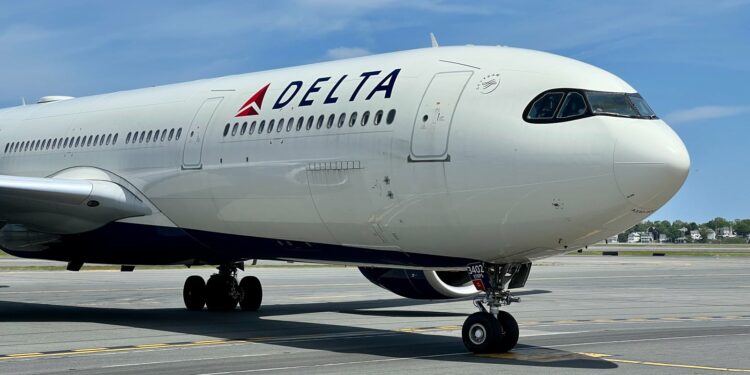Daily Newsletter
Reward your inbox with the TPG Daily newsletter
Join over 700,000 readers for breaking news, in-depth guides and exclusive deals from TPG’s experts
United’s data is perhaps most striking: Its March and April seats to Europe are up by more than a quarter compared to the same period five years ago. It’s just one part of an international flying focus that’s also seen the airline dramatically expand its Pacific network, all while the company awaits a historic order book of wide-body, long-haul-capable jets.
A focus on southern EuropeOverlooking the Grand Canal in Venice, Italy. SEAN CUDAHY/THE POINTS GUY
Just where are travelers flying during those non-summer months?
There are great European destinations to visit in winter, whether you’re hoping to catch a glimpse of the northern lights in Scandinavia or visit the Christmas markets in Germany.
Unsurprisingly, though, airlines have seen the starkest season-defying demand in the warmer, southern parts of Europe.
“Destinations in Spain and Italy have become more year-round destinations than seasonal. And that is new, post-pandemic, and we’re reacting to it,” Andrew Nocella, United’s chief commercial officer, said on United’s Jan. 23 earnings call.
It’s a trend that undoubtedly helped contribute to a record-breaking year for tourism in Spain, which welcomed an all-time high of 85.1 million visitors in 2023, the country’s National Statistics Institute revealed Friday.
Madrid. SEAN CUDAHY/THE POINTS GUY
It has also helped establish a course for United and its U.S. competitors in 2024.
Capitalizing on those demand forces in southern Europe, United will offer a whopping 113% more seats to Italy and Spain in February, March and April compared to those same months in 2019, according to Cirium data. That’s despite the airline (not to mention Delta and American) growing overall 2024 flying to all of Europe at a far more measured pace versus last year.
ZACH GRIFF/THE POINTS GUY
To surge seats to those destinations during the non-summer months, United shifted some off-peak flights away from northern European locations like London and Germany, Nocella said.
Hauenstein also noted how this apparent “extension of the international seasons” tends to draw Delta travelers to the southern parts of Europe earlier in the year instead of the colder destinations.
What does this mean for consumers?
What’s behind this almost year-round demand for travel to Europe? Considering international travel ramped back up in earnest some two years ago, it seems almost far-fetched to suggest the oft-mentioned forces of pent-up, pandemic-era demand are still at play.
Perhaps more and more travelers are finding ways to leverage points and miles and travel rewards credit cards to pay for these trips. After all, numerous airlines reported record frequent flyer sign-ups and cobranded card enrollments in 2023.
The continued strength of the dollar also doesn’t hurt, said John Grant, aviation analyst at the industry data firm OAG.
“A large part of the increased, or at least perceived increases, in demand has been the strength of the U.S. dollar versus the euro, which has resulted in Europe becoming a cheap[er] place to visit,” Grant said.
That can make everything from eating out to public transportation and tourist attractions more affordable than several years ago … once you’re there, at least. For some travelers, that could mean repeat trips to Europe are a more viable option.
Will transatlantic airfare get cheaper in 2024?ZACH GRIFF/THE POINTS GUY
It’s worth watching what all this means for airfare in 2024.
With U.S. and European airlines ramping up flight schedules across the Atlantic in recent years, plenty of analysts have recently asked whether market saturation might be on the horizon. After all, more competition typically leads to downward prices, as we’ve seen with domestic U.S. airfare.
So far, there hasn’t been a significant drop in transatlantic fares, though. The average “good deal” fare to Europe will be around $717 in 2024, booking app Hopper predicted in its 2024 Travel Outlook report. That’s up around 5% from last year — a year-over-year jump far less steep than what travelers found in 2023 or 2022 but remarkably unrefreshing (for consumers, at least) considering Hopper has noted year-over-year price drops to some other prominent international destinations like Mexico, the Caribbean, Central America and even Australia and New Zealand.
Ultimately, Grant predicts fares to Europe will remain relatively consistent from last year as a result of sustained demand, fairly consistent full-year supply from 2023 and airlines continuing to deal with higher fuel, maintenance and labor costs.
How to find the cheapest flights to Europe
To that end, conventional wisdom still applies. Lock in your airfare as early as you can.
Though the non-summer months have certainly gotten busier, the shoulder seasons — the months between those of higher demand — are still far more ripe for a discount.
As Hauenstein noted on Delta’s recent earnings call, “Of course, the shoulder is still not as strong as the peak summer.”
So, searching for flights in, say, March or October likely remains a more reliable bet than June or July if you’re looking for a bargain.
“If you can travel in the shoulder season, be flexible of the routing and your dates of travel, and book early, you may get what will look like a bargain come the summer,” Grant said, “even if it is more expensive than 2019.”
Related reading:
Source link : https://thepointsguy.com/news/airlines-europe-travel-seasonal-changes/
Author :
Publish date : 2024-02-06 08:00:00
Copyright for syndicated content belongs to the linked Source.



